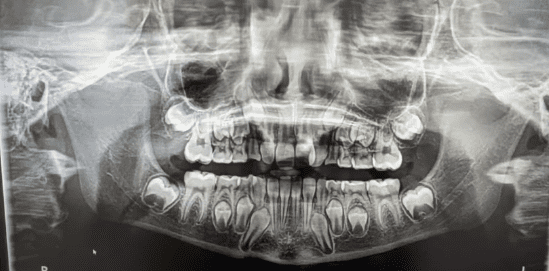Fully understanding your orthodontic treatment sometimes means taking a step back towards learning the basics of tooth anatomy!

Although teeth appear to be pretty simple just by looking at their surfaces, the truth is that tooth anatomy is very complicated. There are many different parts of teeth, and each of these parts have unique functions.
It’s important for everyone to have a good understanding of tooth anatomy, because this type of knowledge isn’t just for dentists and orthodontists. Knowing tooth anatomy basics can help you be more aware of particular problems that impact your oral health as they arise, and being well-informed about your teeth also helps you be more careful in the future.
Below we’ll be going over tooth anatomy basics, so keep reading on to learn more about your teeth!
Structures & Unique Functions Of Your Teeth
As we mentioned at the top of the blog, there truly is so much more to tooth anatomy than the exterior surfaces we all see. The following are the parts of your teeth that you should know about:
A Tooth’s Crown
The crown of a tooth is the visible part that we see, but underneath your crown are many other parts. Your crowns will likely have a whiteish shade based upon factors like thickness and enamel health. The first part of a tooth crown is referred to as the anatomical crown, which is the very top part of your tooth that you see. After this layer comes the enamel, which can generally be connected to the outermost layer of each tooth.
Your tooth enamel just so happens to be an incredibly tough type of tissue, and its function is to work as a shield against bacteria. Your enamel also keeps your teeth strong, which allows you to enjoy increased chewing pressures when you eat.
The next part of the crown is referred to as the dentin, which is comprised of a mineralized tissue layer. The main function of your dentin is to help you prevent tooth damages from any extreme cold or hot temperatures.
A Tooth’s Root
A tooth’s root is incredibly important because it helps keep teeth in their proper place. Your tooth roots will extend into the actual bone of each tooth and do its part to hold the tooth in place, and about two-thirds of each tooth is actually a part of the root.
There are many parts of tooth roots, including the following:
- The Cementum: This part of your tooth root is connected to a periodontal ligament and helps cover each tooth.
- Blood Vessels & Nerves: Blood vessels help transport vital nutrients to your periodontal ligaments, and nerves will help you to control your chewing forces.
- Periodontal Ligament: Your periodontal ligaments are comprised of collagen fiber and connective tissues, which help connect each tooth to its appropriate socket.
- Root Canal: This is the passageway within each root that contains pulp.
- Jaw Bone: Your jaw bone is technically a part of tooth roots because it’s the bone that includes tooth sockets and surround your roots.
Dental Cervix
The dental cervix is also referred to as the neck of each tooth, and it’s the portion of your tooth that is between the crown and the root. The dental cervix functions to form a line where the enamel and the cementum meet.
Your dental cervix is comprised of three unique parts, including pulp cavity, gums and pulp. The pulp found within the dental cervix is made of countless tiny nerves, blood vessels and tissue, and this is considered to be the innermost portion of each tooth. Your gums are the soft, pink connective tissue that we can see, which is technically connected to both the cementum and the dental cervix. The pulp cavity is found within the tooth crown and is where tooth pulp is contained.
Different Types of Teeth
Each of us has 32 teeth, not including wisdom teeth. Overall, there are four different types of teeth that you should know about, and each tooth type serves unique functions when it comes to eating, drinking and speaking.
The four types of teeth include the following:
- Premolars: These are the two pointy teeth found on each side of your mouth that assist in biting into pieces of food.
- Molars: These are the various teeth found in the back of your mouth that help you chew and grind down food.
- Incisors: Incisors are chisel-shaped and function to help you cut up and tear your food bites. These teeth are also very important in helping you formulate words as you speak.
- Canines: These are the pointiest teeth in the mouth that are used to efficiently crush pieces of food.
Knowing Your Tooth Anatomy Is Important When Starting Your Orthodontic Treatment With Dr. Karpac!
Understanding tooth anatomy is important because it helps you to also understand all sorts of dental issues, and why certain issues are more severe than others. What’s most important about this type of dental health information is that it gives you the blueprint to knowing how to properly address your orthodontic problems.
JK Orthodontics has been supporting families throughout Columbus and all of Central Ohio for over 30 years when it comes to high-quality orthodontic services, and part of our services is helping patients better understand what they’re currently going through.
Contact us online or call us at 614-766-0330 (Dublin office) or 614-471-6355 (Gahanna office) to learn more about how your tooth anatomy plays a role with your current orthodontic issues during your initial consultation with Dr. Karpac!

